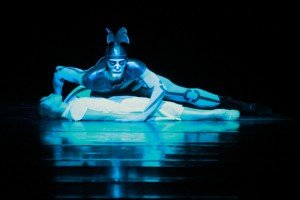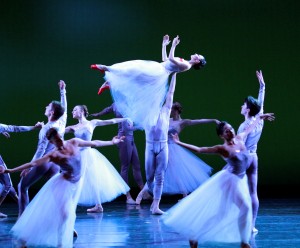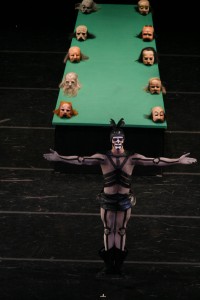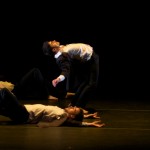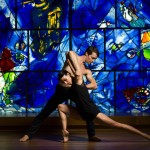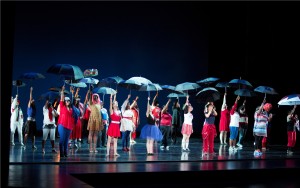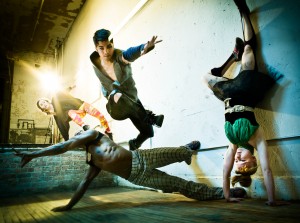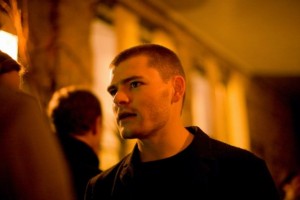
Zachary Whittenburg - photo by Todd Rosenberg.
If you’re at all familiar with the Chicago dance scene, you know his name. He’s been a dancer, choreographer, teacher, student, panel moderator, writer, critic and “insatiable audience member.” Locally, he’s danced with Hubbard Street Dance Chicago, Lucky Plush Productions, Same Planet Different World Dance Theatre and Molly Shanahan/Mad Shak. After graduating high school two years early at age 16, he moved to Seattle to train at Pacific Northwest Ballet School and joined the company at 18. After three years at PNB performing works by choreographers ranging from George Balanchine to William Forsythe, he moved cross-country to dance with North Carolina Dance Theatre, where he was a soloist for a season before coming to Chicago to dance with Hubbard Street for two years.
He then traveled for a year performing Crystal Pite’s choreography with Les Ballets jazz de Montréal. He’s also written for many publications and websites including Flavorpill, See Chicago Dance, Windy City Times, Hoy Chicago, Time Out Chicago, Dance Magazine, Pointe Magazine, Dance International magazine (where he recently got the cover story!), Dance Teacher magazine, Dance Spirit magazine as well as his own blog, trailerpilot. Zac Whittenburg: wunderkind, indeed.
Now, Whittenburg is taking his career in a new direction. Almost a decade after dancing with Hubbard Street, he returns to join the external affairs team at the beginning of an exciting landmark season that will include a full-length world premiere by resident choreographer Alejandro Cerrudo, a work by Swedish choreographer Mats Ek and a collaboration with Alonzo King LINES Ballet.
I spoke with him over Labor Day weekend, just before he started in his new position.
When you danced with Hubbard Street, which choreographer or pieces were your favorites or that you had a deep experience with?
I’ll never forget the experience of learning “Minus 16” [by Ohad Naharin]. It’s probably the piece I performed most when I was in the company. I might’ve done over 100 performances of it in two years. It’s such an extraordinary piece. It asks so much of the dancers as artists. We did a piece by Jirí Kylían for five dancers called “No More Play.” It runs like a wristwatch, the way the characters and the vocabulary intersect with each other, and how the sections turn from one into the next. I’d never been so close to something that was built that way. I learned so much about choreography just by being involved with that.
Why did you leave Hubbard Street?
Well, there are two answers to that question. A dancer’s career is very short, and things run their course. And it was around the time that I became aware of Crystal Pite’s choreography. I saw a video of “Short Works: 24,” which I think was the first piece she made while she was in residence [at Les Ballets jazz de] Montréal. I was aware of her when she was a member of Frankfurt Ballet, which sort of became today’s Forsythe Company, but hadn’t seen her choreography before. I wasn’t aware of the things she was doing using Forsythe’s movement vocabulary in a dance theater context. I thought that was really fascinating, and that she was doing it with a lot of intelligence and humor. I wanted to work with her. I had the wonderful fortune of doing Crystal’s evening-length work [“The Stolen Show”] all over Canada and in Asia and in the United States. To get to see so much of the world, and to have the reason for that travel be that you’re bringing this work to audiences all over…it was a once-in-a-lifetime experience. There was a sense of purpose. A feeling that we were a company of ambassadors for contemporary dance.
Let’s talk about your new gig at Hubbard Street. What is your official job title and what will you be doing?
I’m going to be the company’s manager of communication. I have a pretty good understanding of what I’ll be doing, but of course, I’m not in the chair yet. It’s a great position because there are a lot of different angles to it. A large part of it is press relations and working with media outlets to get the word out about what the company is doing. That said, that comes in a variety of flavors. The conversations that I had in the interview process…we were talking about how the media landscape is changing. Part of this job is going to be working on getting the word out about a company when the channels about how the word gets out about a contemporary dance company like Hubbard Street are changing. There are new channels opening, old channels closing, a whole new landscape of how people receive information. I’m thrilled to walk into the challenge of, how do you work with that, and how do you get the most out of what the current media landscape is, anticipate how it’s going to change in the future and use all of that to your advantage, to make sure people know what Hubbard Street is doing, make sure they are aware of the variety of things we do in addition to the production and stage work, and how those things relate to one another. I’m excited to talk about our partnerships with other institutions and put stories in places where the company hasn’t been covered before.
You’re coming in right at the beginning of the 35th Anniversary Season, which is a big deal. What do you expect to be doing on day one?
I know I have a meeting on Tuesday morning with some other managers. It’s great that literally the first thing I’ll do is touch base with people in other departments to see what they’re doing and what they have planned for the near future. I haven’t been in that building very much in the last eight years. I have a lot of catching up to do, not only meeting the people that make the magic happen, but what the company’s overall strategies are. There are a lot of things that I’ve already learned about the 35th Anniversary season and there’s a lot more that I don’t know yet, so I imagine a lot of it will be about finding my place in relation to all those initiatives, cooperating with the other team members and figuring out how I can help them.
You know I like to joke around about how we’re “arch nemeses,“ but I hope you really know that I’m a huge fan. Your voice, not only in the Chicago dance scene, but nationally, is really important and you have a big fan base, so what does your new job mean for trailerpilot?
The blog still exists. When I was full-time at Time Out Chicago, I wasn’t posting a lot. At this point, I’ve got 426 posts on the blog. It’s a big archive and I will continue to make the annual payments to make sure people can find it. I’ve always been interested in things other than just dance and choreography. I’m glad I’ll still have a place, where, if I go see a film and really have something to say about it, I can. My voice will still be out there, I’m still on Twitter, although long form writing about dance isn’t appropriate while I’m manager of communication for a dance company. I think, just in going back over my career with you, over the phone this morning, it’s just been one episode after another of all of these different things I’ve done, and all of my various experiences constantly coming back around and intersecting and sort of morphing together in new ways. Writing is one of those things. I’m certain that will continue. I don’t have my mouth stapled shut, but Hubbard Street is going to be the star in my sky. I love the company. I love where it’s been and where it’s going. I’m really looking forward to helping them get in front of more people and new audiences.
